The Filipino Group discussion

This topic is about
A Tale of Two Cities
note: This topic has been closed to new comments.
Archives
>
[F2F Book Discussions] July 2014: A Tale of Two Cities by Charles Dickens | Moderators: Ycel & DC
 Here's a little intro and some notes about A Tale of Two Cities, just to help you get an idea about the book, and the man behind the novel.
Here's a little intro and some notes about A Tale of Two Cities, just to help you get an idea about the book, and the man behind the novel.On ATO2C
ATO2C is Dickens' twelfth novel and was published in his new weekly journal, All the Year Round, without illustrations. In an innovative move, Dickens simultaneously released installments of the novel on a monthly basis with illustrations. Dickens took advantage of the novel's serial publication to experiment with characterization, plot, and theme. He described the work in a letter to his friend John Forster, cited in Rudi Glancy's A Tale of Two Cities: Dickens's Revolutionary Novel, as "a picturesque story rising in every chapter, with characters true to nature, but whom the story should express more than they should express themselves by dialogue." The novel that emerged from his experimentation is now regarded as one of Dickens's most popular and most innovative works.
Read more: (view spoiler)
Dickens and His Time
Charles Dickens was the most popular English novelist of the Victorian Age, a time period spanning roughly from the 1820s to the end of the nineteenth century. He was born in Portsmouth, England in 1812. As the second of eight children in a very poor family, he lived a difficult childhood. Eventually, his father was sent to debtor’s prison, and Dickens himself went to work at the age of twelve to help pay off the family’s debt.
This troublesome time scarred Dickens deeply and provided him with substantial material for such stories as Great Expectations, Oliver Twist, and David Copperfield. Steeped in social criticism, Dickens’s writing provides a keen, sympathetic chronicle of the plight of the urban poor in nineteenth-century England. During his lifetime, Dickens enjoyed immense popularity, in part because of his vivid characterizations, and in part because he published his novels in installments, making them readily affordable to a greater number of people.
Read more: (view spoiler)
Trivia about the French Revolution
As provided by the participants of this discussion. (Thank you everybody!) Check this post to view it.
 Our official reading plan actually starts on July 1. On these days before we start talking about ATO2C, we'd first like to get your own preconceived opinions about it, and maybe even on Charles Dickens himself.
Our official reading plan actually starts on July 1. On these days before we start talking about ATO2C, we'd first like to get your own preconceived opinions about it, and maybe even on Charles Dickens himself.Day 1 Questions
Have you read Dickens before? If yes, how was it?
Do you have any expectations about this book? What are they?
Day 1 Activity
ATO2C is a novel about the French Revolution. To get ourselves ready for the myriad of references about this war, do share with us 3 facts about this momentous historical milestone.
 Sawsaw-suka...
Sawsaw-suka...Yes, I have read Charles Dickens in High School as a required read. Junior High School, when the English and Social Studies are in sync with the topics of World Lit (around 3rd grading period-ish)... discussions of British lit and its relationship with its Industrial Revolution (I am not good with history or lit so please enlighten me more hehe)
I find Oliver Twist funny, A Christmas Carol sad, and Great Expectations cheesy *full of mala-telenovela cheeseballs hahaha.
My mum reads Charles Dickens, but the abridged versions. When we discussed about David Copperfield, she was so engrossed with the "British situation" (as she calls it, saying "naging mahirap rin pala ang London, ano?") I started buying some abridged versions of other works.
Yay for this discussion. I hope this time around I will not feel the pressure and read the whole version of this novel again... after all those years of my distant panks-not-die-kumakain-ng-bakal childhood.
Looking forward to share my inputs, if I am not that busy. Or if I am deadly busy (view spoiler)
 Uhm French Revolution...?
Uhm French Revolution...? 1. The french desired to have Democracy. It is this timeline that they are so fed up with the powerful monarchies.
2. Sumikat si Napoleon Bonaparte in this timeline
3. Victor Hugo's Les Miserables contains his sentiments about this time period.
^Not exactly wikipedia-hardcoded facts, but my personal interpretive research. Ang sabaw ko lang bwahaha. :)
 1. I've read a couple of Dicken's work, and Hard Times being my favorite. It was a critique on the inhumane economic system and materialism of the Industrial Age, as I would like to believe. As G.B. Shaw would put it "...[it] was written to make the reader feel uncomfortable".
1. I've read a couple of Dicken's work, and Hard Times being my favorite. It was a critique on the inhumane economic system and materialism of the Industrial Age, as I would like to believe. As G.B. Shaw would put it "...[it] was written to make the reader feel uncomfortable".2.a. I think the French Revolution is the beginning of the era in history called the Modern Age.
b. This was the time when one can make a fortune from authorship. Voltaire et al, also called the philosophes, wrote works that influenced the ideology of the French revolution. Freedom, equality, and brotherhood.
c. The CLERGY, which was one of the cornerstones for the Old Regime, was in one hell of a shit storm. lol
 ELLA: (view spoiler)
ELLA: (view spoiler)ANGUS: (view spoiler)
MONIQUE: (view spoiler)
MILES: (view spoiler)
GWAXA: (view spoiler)
LOUIZE: (view spoiler)
MABELLE: (view spoiler)
MELIZA: (view spoiler)
TIN: (view spoiler)
 Thank you everyone for your answers! We do appreciate you all taking the time to respond :)
Thank you everyone for your answers! We do appreciate you all taking the time to respond :)I hope that you are all enjoying the trivia you're giving out as much as we do. (These tidbits will really help give depth to our discussions of ATO2C!)
Nevertheless, for everyone's reference, here are the French Revolution trivia you've all so far provided.
Click this tag to view it: (view spoiler)
 Just to add to Ycel's comments:
Just to add to Ycel's comments:Ella: (view spoiler)
Angus: (view spoiler)
Monique: (view spoiler)
Miles: (view spoiler)
Gwaxa: (view spoiler)
Louize: (view spoiler)
Mabelle: (view spoiler)
Meliza: (view spoiler)
Tin (& Ycel): (view spoiler)
 Day 1 Questions
Day 1 QuestionsHave you read Dickens before? If yes, how was it?
Do you have any expectations about this book? What are they?
(view spoiler)
Day 1 Activity
ATO2C is a novel about the French Revolution. To get ourselves ready for the myriad of references about this war, do share with us 3 facts about this momentous historical milestone.
(view spoiler)
:)
 Louize wrote: "All 4 [Dickens] books were set in England. All involves poverty and children. He is a tad heavy on his social commentaries. Ideally, he uses unforgettable characters and sentimental scenes, maybe to balance all his revelations on social issues. And one can't help notice that Dickens had a set of tickle bones too."
Louize wrote: "All 4 [Dickens] books were set in England. All involves poverty and children. He is a tad heavy on his social commentaries. Ideally, he uses unforgettable characters and sentimental scenes, maybe to balance all his revelations on social issues. And one can't help notice that Dickens had a set of tickle bones too."Very interesting observation, Louize. I think that unforgettable characters and sentimental scenes are, indeed, his forte, and we would get some of that nature in ATO2C :)
Gay: (view spoiler)
Bennard: (view spoiler)
Tin: (view spoiler)
Moreover: added noted trivia to trivia post.
 [Reading Plan Day 1-2: Book 1, Chapters 1-4]
[Reading Plan Day 1-2: Book 1, Chapters 1-4]
Today is the first day of the reading plan, and so we start things off officially with the novel's famous first lines:
“It was the best of times, it was the worst of times, it was the age of wisdom, it was the age of foolishness, it was the epoch of belief, it was the epoch of incredulity, it was the season of Light, it was the season of Darkness, it was the spring of hope, it was the winter of despair, we had everything before us, we had nothing before us, we were all going direct to heaven, we were all going direct the other way - in short, the period was so far like the present period, that some of its noisiest authorities insisted on its being received, for good or for evil, in the superlative degree of comparison only.”
(Like this quote on Goodreads here.)
We will readily admit that the first chapter is actually among the hardest to read in the book, and that's because it's already steeped with a number of references that we modern people probably don't understand, unless we're either Victorian scholars, or very well-researched.
Recommended by the Mods
Ycel & I therefore would recommend, if you're new to the classics genre, for you to actually listen to the audiobook's first chapters. (The audiobook is also on Youtube.) This will help you get a general feel about the language.
If listening to an audiobook's not your thing, there's also this "video book", wherein the video flashes the actual transcript/chapters on screen, while a narrator narrates in the background.
 Glossary: Book 1, Chapters 1-4
Glossary: Book 1, Chapters 1-4
Us mods may not be able to answer ALL of your questions about these chapters, but we have prepped a simple glossary for you to check out if you are in need of reference-assistance.
If you need further help with the first chapters, just holler on the thread; we'll do our best to assist you :)
Click this tag for Chapter 1: (view spoiler)
Click this tag for Chapter 2-4: (view spoiler)
 Also, just to note: No other questions and activities from us mods for today. Nevertheless, we'd love to hear about what you think of the first two chapters.
Also, just to note: No other questions and activities from us mods for today. Nevertheless, we'd love to hear about what you think of the first two chapters.My own personal take on Chapters 1 & 2: (view spoiler)
 Reference Images: Book 1, Chapters 1-4
Reference Images: Book 1, Chapters 1-4
There were a king with a large jaw and a queen with a plain face, on the throne of England...
In England, George III (r. 1760-1820) and his queen, Charlotte Sophia, were the ruling couple.
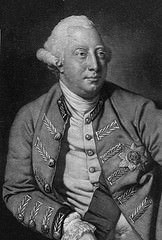

... there were a king with a large jaw and a queen with a fair face, on the throne of France...
In 1775, the King and Queen of France were Louis XVI (r. 1774-93) and his consort, Marie Antoinette. Both lost their lives to the guillotine.
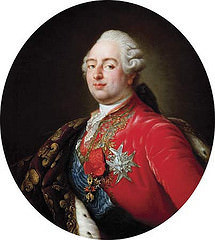
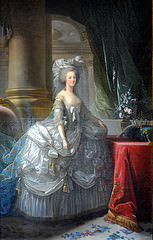
Brittania statue:
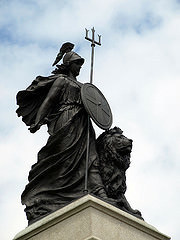
Maps of London-France, vis-a-vis Dover, Calais, Paris:
1. (view spoiler)
2. (view spoiler)
 Word. First paragraph/sentence is classically trippy.
Word. First paragraph/sentence is classically trippy.Can it be considered a kilometric sentence? lol
 GAY: (view spoiler)
GAY: (view spoiler)BENNY: (view spoiler)
TIN: (view spoiler)
MELIZA: (view spoiler)
MILES: (view spoiler)
 WOW Camille! Will you be publishing your own annotated version of #ATO2C? XD
WOW Camille! Will you be publishing your own annotated version of #ATO2C? XDChapters 1 & 2
(view spoiler)
 Whoa, information overload way up there!^
Whoa, information overload way up there!^My complaint about Chapters 1 & 2 (view spoiler) is dammit, I didn't know what a "mail" is, as in "Dover mail". I kept thinking a stationary thing (as in a mailpost) but dammit, why is it moving and why is it being drawn by horses? @.@
Now I know.
(view spoiler)
Thanks to the Dover mail, the first two chapters are a helluva bumpy ride. Literally and figuratively.
 Monique: I also wondered about the mail. While reading the start of Chapter 2, the only mails that I know are the letter mails and chainmails. Haha! Two dictionaries after, I imagined what a Dover mail looks like. Hehe.
Monique: I also wondered about the mail. While reading the start of Chapter 2, the only mails that I know are the letter mails and chainmails. Haha! Two dictionaries after, I imagined what a Dover mail looks like. Hehe.I also love the first sentence, by the way. :) In Chapter One, I just continued reading even though I don't understand the references and just accepted that England and France were in turmoil. Hehe! Still, thanks for the glossary.
 Lol! Lahat pala nawindang sa mga unang chapters. I was so very glad about DC's glossary because after Chapters 1 and 2, I thought: "Mr. Charles Dickens, what the dickens are you talking about?" Blunderbusses, Cock-lane ghost, tumbrils...ano itong binabasa ko, Lewis Caroll poem? Twas brillig, and the slithy toves, did gyre and gimble in the wabe; All mimsy were the borogoves....XD
Lol! Lahat pala nawindang sa mga unang chapters. I was so very glad about DC's glossary because after Chapters 1 and 2, I thought: "Mr. Charles Dickens, what the dickens are you talking about?" Blunderbusses, Cock-lane ghost, tumbrils...ano itong binabasa ko, Lewis Caroll poem? Twas brillig, and the slithy toves, did gyre and gimble in the wabe; All mimsy were the borogoves....XDYcel:(view spoiler)
 Haha, glad the glossary and images are helpful, even if it can seem to be too much. We aim to please :D
Haha, glad the glossary and images are helpful, even if it can seem to be too much. We aim to please :DMonique wrote: "My complaint about Chapters 1 & 2 [spoilers removed] is dammit, I didn't know what a "mail" is, as in "Dover mail". I kept thinking a stationary thing (as..."
Notably, if I'm not mistaken, the mailpost was used as a means of travel because it was the fastest means of transportation back then. I think that a slower means of travel was then frowned upon, since there were plenty of highwaymen about? Horsepower, no kidding :)
(Then again, think about hitching a ride with LBC/UPS/Air21. I suppose it was something like that :D)
BTW, thank you Monique for the photo of the mailpost! Check her post out to view it.
Will post up questions and activity in a bit :)
 [Reading Plan Day 3: Book 1, Chapters 5-6]
[Reading Plan Day 3: Book 1, Chapters 5-6]
Seems like a lot of the readers have successfully gotten passed the first few chapters. Good job everybody! (Nevertheless, if you're still having a hard time, go ahead and rant about it on this thread; we don't mind :D)
Chapters 5 & 6 are, in my personal opinion, quite dramatic. Given this, our activity for today will take a dramatic turn, too :)
Day 2 Questions
1. Explain the opening lines of ATO2C in your own words. These lines: (view spoiler)
2. What was your initial reaction to the phrase "recalled to life", and what did you first think it corresponds to, based on what you have read so far?
3. What are your thoughts about the race for the spilled wine on the streets?
4. Do you have any other thoughts about the characters, settings, and happenings that you have so far read?
Day 2 Activity
How an individual’s character is developed or destroyed in a crisis is a major theme in this novel. Tell us about a person in your life who developed character in crisis, and how this person responded to the crisis.
 Glossary & Reference Images: Book 1, Chapters 5-6
Glossary & Reference Images: Book 1, Chapters 5-6
Glossary
Book 1, Chapters 5-6: (view spoiler)
Reference Images
Paving stones that mark the outline of the Bastille fortress, on the corner of the Place de la Bastille and the rue Sainte Antoine:

Map of Saint Antoine's location (vis-a-vis the Bastille):
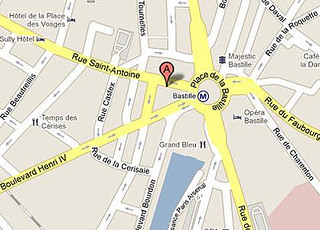
This topic has been frozen by the moderator. No new comments can be posted.
Books mentioned in this topic
A Tale of Two Cities (other topics)A Christmas Carol (other topics)
Oliver Twist (other topics)
The Old Curiosity Shop (other topics)
Barnaby Rudge (other topics)
More...


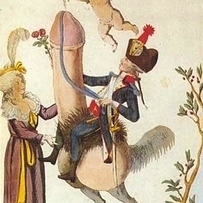




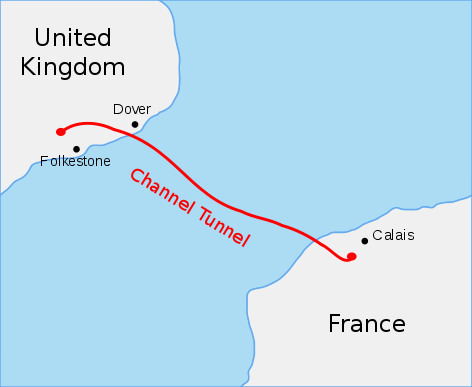
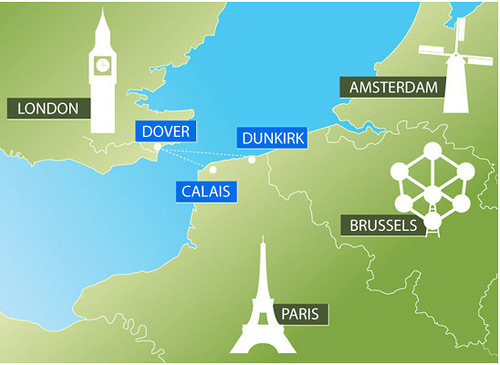

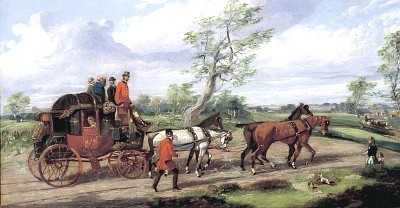


((For the week of July 21-24, we will be discussing Book 3, Chapters 8-15.
July 25: Online Screening. | July 26: Face-to-face discussion.
Post for Book 3, Chapters 8-12. | Post for Book 3, Chapters 13-15 (with Qs).
If you've just begun, don't worry; we'd still love to hear about what you think of the book so far :) You can also still answer past questions and activities. Here are the links:
Day 1 Qs & activity. | Day 2 Qs & activity. | Day 3 Qs. | Day 4 Qs. | Day 5 Q. | Day 6 Q. | Day 7 Activity. | Day 8 Qs. | Day 9 Qs. | Day 10 Qs & activity.))
Looking for a copy?
- Fully Booked may have one for you.
- Downloadable / web versions of the ebook here.
- Audio book here.
- First part of the videobook here. (Transcript on the video + narrator in the background.)
(If you are having trouble with the links above, let us know, and we'll try our best to help you out.)
Reading Plan
Like most Victorian authors, Dickens could be verbose. At roughly 400 pages, ATO2C is actually one of his shorter novels. A reading plan grouped into chapters with common setting and timeframe is the most logical and practical way to read this novel.
We are looking at around 2 chapters per day, everyday, until before the F2F on July 26. You are, of course, more than welcome to read a few pages ahead. :)
Click this tag for the reading plan: (view spoiler)[
June 29 – 30
Introduction to Dickens and the French Revolution
July 1 – 3 (~50 pages)
Book the First: Recalled to Life
Chapter 1 (Background): Post on Book 1, Chapters 1-4.
Chapters 2 – 4 (England, 1775)
Chapters 5 – 6 (France, 1775): Post on Book 1, Chapters 5-6.
July 4 – 15 (~200 pages)
Book the Second: The Golden Thread
Chapters 1 – 6 (England, 1780): Post on Book 2, Chapters 1-6.
Chapters 7 – 9 (France, 1780) Post on Book 2, Chapters 7-9.
Chapters 10 – 14 (England, 1781) Post on Book 2, Chapters 10-13. | Post on Book 2, Chapters 14-15.
Chapters 15 – 16 (France, 1781) Post on Book 2, Chapters 16-18.
Chapters 17 – 20 (England, 1781) Post on Book 2, Chapters 19-20.
Chapters 21 – 22 (England & France, 1789) Post on Book 2, Chapters 21-24.
Chapter 23 (France, 1789)
Chapter 24 (England, 1792)
July 16 – 23 (~150 pages)
Book the Third: The Track of a Storm
Chapter 1 (France, 1792) Post on Book 3, Chapters 1-3.
Chapters 2 – 15 (France, 1793) Post on Book 3, Chapters 4-7.
(hide spoiler)]
Discussion proper
We will be posting questions around 2-3 times a week (maybe more), and have some activities, too. Readers aren't required to answer the questions (but it sure would be great if you did!), and you are all welcome to post about your thoughts on the chapters you have so far read.
However, please take into consideration the others who are following the reading plan, so if you've got anything spoiler-ish to talk/rant/violently react about, go ahead and do so while using the (view spoiler)[spoiler (hide spoiler)] tags.
Film showing on July 25
Besides our reading plan, we would like to top the online discussion off with an (online) showing of the 1935 Jack Conway-directed film adaptation of the book. Online screening thread is here.
(It's known to be a faithful adaptation of ATO2C. Here's its IMDb page.)
This will be done via livestreaming, and could just be a fun night of casual conversation, funny laughs, and, of course, fire & tears. (I remember that we had fun when TFG had screenings of the Pride & Prejudice TV series some time before.)
F2F on July 26
At the end of the month, we will be meeting with other members of TFG who have read/are reading/want to read the book, and we would love it if you would join us to share with us your own thoughts, rants, and what not.
Don't be shy! We'd love to see you :)
The event thread is here. | Note your yea or nay on joining the event here.
We thank you for dropping by, and we hope to hear of your own ideas about Lucie, Madame Defarge, Charles Darnay, and all the merry bunch in this tale about two cities.